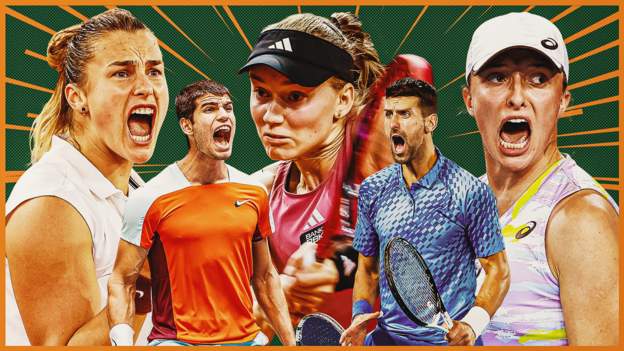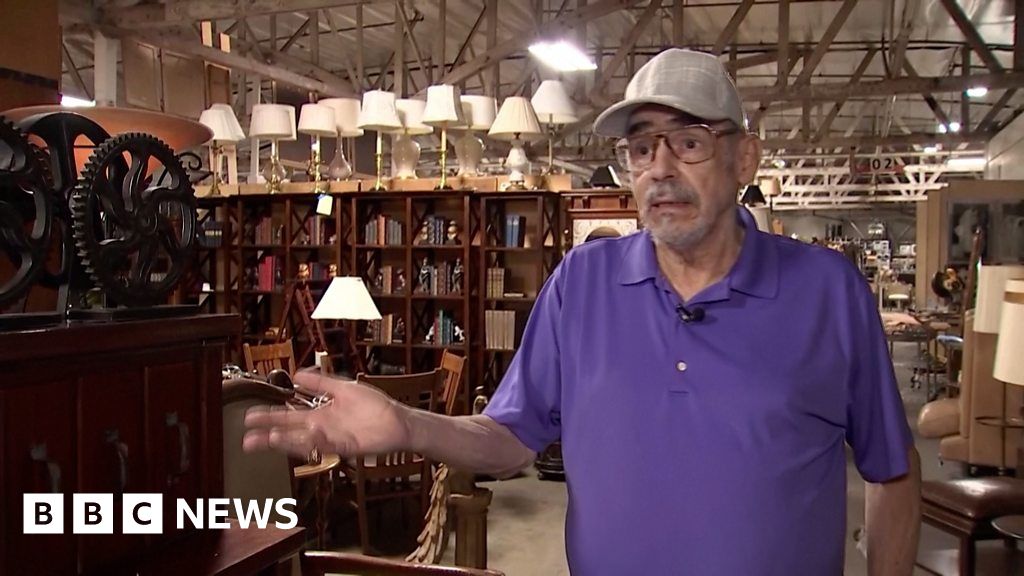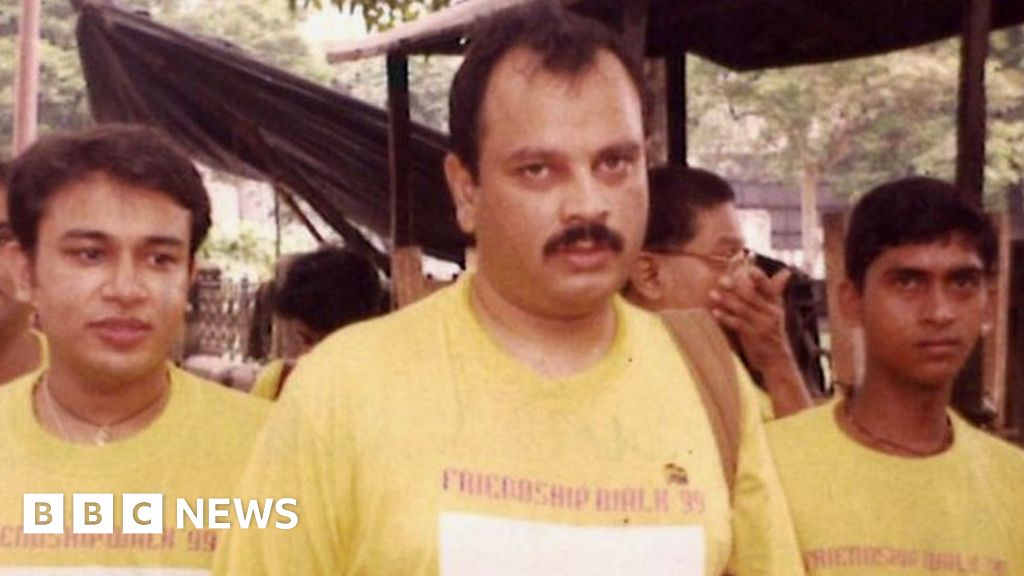[ad_1]
| Venue: Roland Garros, Paris Dates: 28 May-11 June |
| Coverage: Live text and radio commentaries of selected matches across BBC Radio 5 Sports Extra, the BBC Sport website and app |
For the first time in almost 20 years, the French Open will begin this weekend with an added layer of intrigue.
With 14-time men’s champion Rafael Nadal missing through injury and two-time women’s champion Iga Swiatek not as dominant as last year, the identities of both singles winners are extremely difficult to predict with any sense of certainty.
Nadal’s absence for the first time in 19 years will be keenly felt by organisers and fans, but his withdrawal has further opened up the men’s draw and gives a host of players extra encouragement they can win.
And an injury scare for Swiatek, whose position as the WTA world number one has been challenged by Aryna Sabalenka and Elena Rybakina, also leaves that draw open.
Cameron Norrie, seeded 14th, leads the British charge at a venue where the nation’s players have had limited success this century. Neither Andy Murray nor Emma Raducanu will be appearing at Roland Garros and no British women have qualified for the singles.
The clay-court tournament starts on 28 May, concluding with the finals on 10 and 11 June.
Alcaraz to take Nadal’s crown? Or Djokovic to win record 23rd title?
While nothing in sport is ever certain, Nadal lifting the Coupe des Mousquetaires has been as close as anything.
Not this year. Nadal, who has lost only three of his 115 career matches at Roland Garros and is known as the ‘King of Clay’, is out with a long-term hip injury.
Before last week’s announcement that the 36-year-old would not be able to play, Nadal had already slipped behind Spanish world number one Carlos Alcaraz and Serbia’s 22-time major champion Novak Djokovic as the favourite in the eyes of many observers.
Following a dominant start to the season, Alcaraz is heavily tipped to be only the fifth man since 2005 to claim the title.
After missing the Australian Open with an injury, the 20-year-old US Open champion returned to win four of his next six tournaments – Buenos Aires, Indian Wells, Barcelona and Madrid, while also reaching the Rio de Janeiro final and Miami semi-finals.
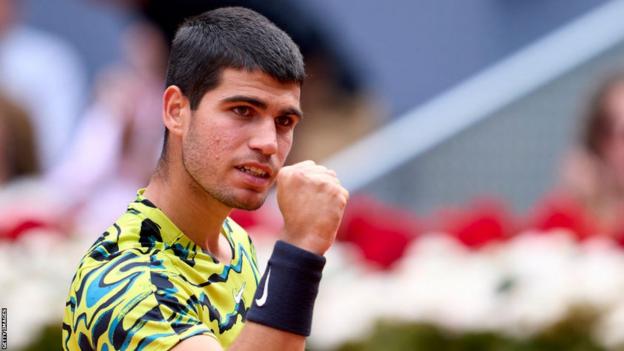
Back-to-back titles in Barcelona and Madrid helped extend Alcaraz’s record to 20 wins from his 21 matches on clay this season. Then came an unexpected twist in Rome.
Alcaraz lost to Hungarian qualifier Fabian Marozsan in the Italian Open last 32 and showed a fallibility not seen in the preceding weeks.
Djokovic has won five of the past seven Grand Slam tournaments he has played in and knows a third victory at Roland Garros will put him ahead of Nadal in terms of most major men’s singles titles.
But his preparations have been far from smooth.
The 36-year-old, who celebrated his birthday this week, missed the Madrid Open with an elbow injury and did not look entirely comfortable in Rome before losing in the quarter-finals.
Nevertheless, Djokovic has the pedigree, experience and history of winning the biggest titles – even in the face of adversity.
Who could challenge Alcaraz and Djokovic?
Russia’s Daniil Medvedev has jumped above Djokovic to be seeded second after winning the first clay-court title of his career in Rome.
Medvedev, 27, has long been seen as a hard-court specialist and few thought he would ever enjoy success on a surface he once described as only being suitable for “dogs playing in the dirt”.
Danish youngster Holger Rune, who beat Djokovic in Rome before losing to Medvedev, has further showcased his talent in an impressive clay-court season and the 20-year-old world number six is being tipped to go far in Paris.
Norway’s Casper Ruud, who lost to Nadal in last year’s final, put a poor start to the season behind him to reach the Rome semi-finals, while 2021 runner-up Stefanos Tsitsipas is also expected to challenge again.
Norrie, 27, has never gone past the third round, while 24th seed Dan Evans and Jack Draper are the other Britons in the draw.
Murray, 36, withdrew at the weekend to prioritise the grass-court season in the build-up to Wimbledon.

Are we seeing the start of a new ‘Big Three’?
For a number of years, ever since Serena Williams was in her pomp, the women’s game has seen a revolving door of major champions.
In the past year, Swiatek has emerged as the dominant force, taking over as the world number one when Australian Ashleigh Barty retired, then winning the Roland Garros and US Open titles.
The 21-year-old from Poland is enjoying another successful season while – understandably – not reaching the same heights as last year when she won 37 matches in a row.
Swiatek has won two titles so far in 2023 – Doha and Stuttgart – but is coming under increasing pressure from Belarus’ Sabalenka and Kazakhstan’s Rybakina.
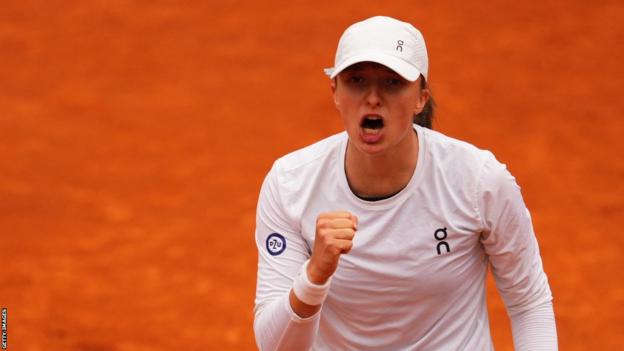
With Sabalenka claiming her first major title at the Australian Open in January, and Rybakina winning the Wimbledon title between Swiatek’s two major victories last year, the trio are fast becoming the WTA’s new ‘Big Three’.
Sabalenka, having complemented her natural power with improvements in her movement, has won more titles (three) and reached more finals (five) than anyone else this season.
On clay, the world number two lost in the Stuttgart final to Swiatek before avenging that loss by beating her to win the Madrid trophy.
However, she suffered a shock early exit in Rome which led to her saying she was “exhausted”.
Meanwhile, Rybakina has elevated herself to the third favourite behind Swiatek and Sabalenka after winning the biggest clay-court title of her career in Rome.
The triumph came in peculiar circumstances, however, having seen three of her six opponents retire through injury.
That included Swiatek when the deciding set of their quarter-final was still on serve and Ukraine’s Anhelina Kalinina when Rybakina was leading 6-4 1-0 in Saturday’s final.
Rybakina had not previously been considered a force on the red dirt, but insists she always felt she could “play good on clay” and put her Rome success down to “experience and better preparation”.
The victory lifted her to fourth in the world – although she would be in the top three alongside Swiatek and Sabalenka if ranking points had been awarded at Wimbledon – and means she is not able to face one of the top two until the semi-finals at Roland Garros.
Who else could challenge?
While Swiatek, Sabalenka and Rybakina have each won one of the three biggest clay-court tournaments leading into Roland Garros, as well as the past four Grand Slams between them, several French Open champions have emerged from the shadows in recent years.
Latvia’s Jelena Ostapenko was one of the them in 2017 as an unseeded 20-year-old and her run to the Rome semi-finals was a reminder of how successful her game can be on the surface.
American teenager Coco Gauff lost to Swiatek in last year’s final but the sixth seed has not managed to string together back-to-back wins on the European clay, while third seed Jessica Pegula – also Gauff’s doubles partner – has maintained her consistency this year.
Fifth seed Caroline Garcia is aiming to become the first French singles champion since Mary Pierce in 2000, but has only reached the quarter-finals once, in 2017, and also lost in the last 32 in both Madrid and Rome.
From a British perspective, Raducanu is out injured following surgeries on her wrists and ankle, and seven other women failed to come through qualifying, leaving the nation without representation in the women’s singles at a Grand Slam for the first time since the 2009 US Open.
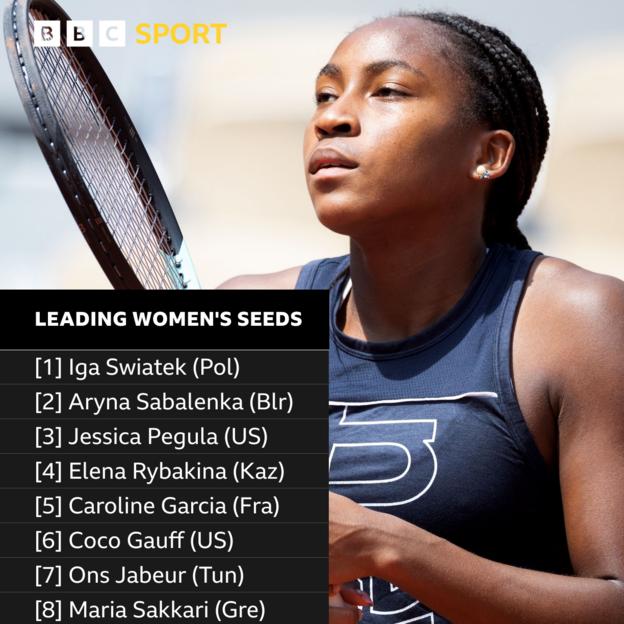


[ad_2]
Source link

